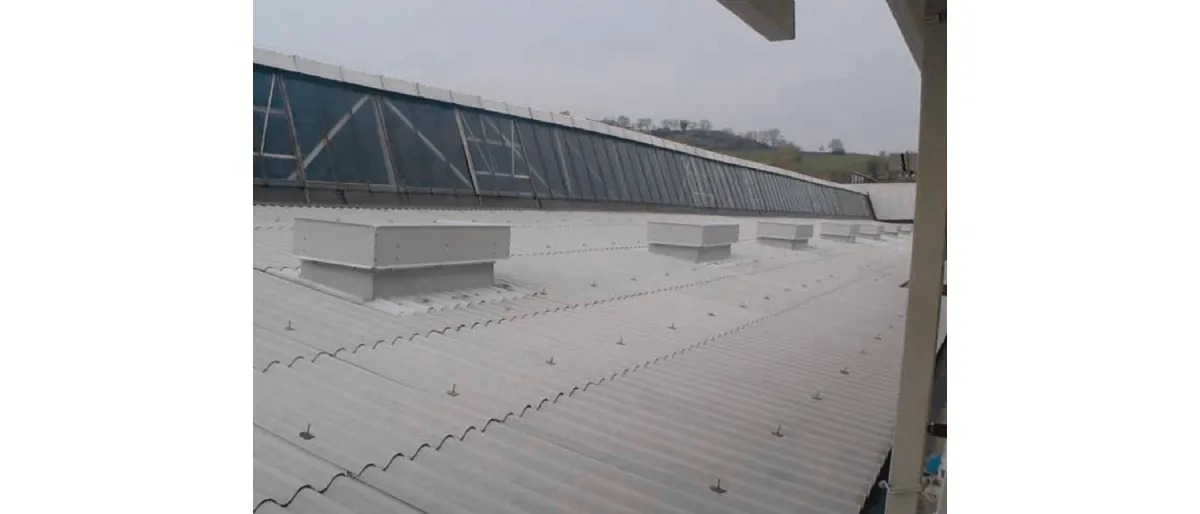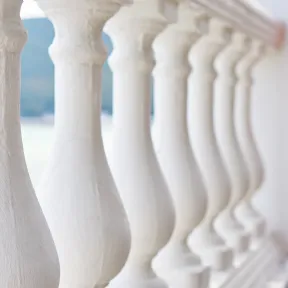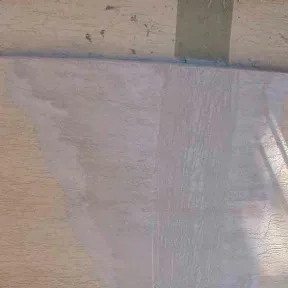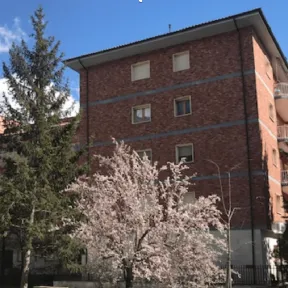Home - Issues and Solutions - Outdoor Solutions - Bonificare e incapsulare una superficie in cemento-amianto
It has long been proven that asbestos cement is a dangerous material as it is highly carcinogenic.
All asbestos cement products, especially when aged, tend to release fibers into the air if they are removed or manipulated.
For this reason, national and European regulations require specific encapsulation treatments.

The temperature fluctuations, erosion caused by weather conditions, and the application of products with poor mechanical properties on facades promote the appearance of cracks in the plaster, more or less deep, which become the easiest ground for mold growth and the penetration of water and aggressive substances. This situation, in the long run, leads to the disintegration of materials and consequently to the decrease in the insulating power of the wall, causing also serious damage to the masonry and therefore to the overall safety of the building. The chemical composition of the Paulin line includes highly elastic and waterproof elastomeric resins that effectively solve these problems, restoring the damaged parts with an impeccable covering effect and giving stability and aesthetic value back to the support.
|
CYCLE |
INDICATIVE QUANTITY OF MATERIAL PER SQM |
|
|
|
Cement-asbestos surfaces must be pre-treated to ensure the effectiveness of the encapsulating coating.
|
|
| 1 | The substrate must be cleaned and brushed. Encrustations or easily detachable particles must be mechanically removed. In case of mold, algae, or lichens growth, the surface must be decontaminated with one or more coats of BIOCID. |
10 SQM/L |
|
|
Brush perfectly. In particular, to prevent the dispersion of fibers in the air and for the treatment of any wastewater, the construction site setup and the management of the operating personnel, diligently follow the current regulations. |
|
|
2 |
Apply with a brush, roller, or low-pressure spray one or two coats, depending on the degree of flaking and absorption of the substrate, of ANTI-ASBESTOS PRIMER mold-resistant isolating fixative solvent, with an average consumption of 0.12 l/sqm per coat.
|
8-10 SQM/L PER COAT |
|
CYCLE |
INDICATIVE QUANTITY OF MATERIAL PER SQM |
|
|
|
Class A TYPE intervention: visible externally.
Certificate GIORDANO S.p.A. Institute of Bellaria (RN) Test report no. 220268 issued on 29/12/2006.
|
|
| 3 | After 24 hours from the application of ANTI-ASBESTOS PRIMER, apply a first coat of elastic encapsulating ANTI-ASBESTOS paint. Allow to dry for at least 24 hours and apply a second coat of a different color than the first. The average total thickness of the dry encapsulating coating must not be less than 300 microns and at no point should it be less than 250 microns. |
10 SQM/L2.4 - 2.8 SQM/L PER COAT (EQUIVALENT TO 200 - 230 MICRONS) |
|
|
Class B TYPE intervention: visible from the interior. Certificate GIORDANO S.p.A. Institute of Bellaria (RN) Test report no. 220269 issued on 29/12/2006. |
|
|
3 |
After 24 hours from the application of ANTI-ASBESTOS PRIMER, apply a first coat of elastic encapsulating ANTI-ASBESTOS paint. Allow to dry for at least 24 hours and apply a second coat of a different color than the first. The average total thickness of the dry encapsulating coating must not be less than 250 microns and at no point should it be less than 200 microns.
|
2.4 - 2.8 SQM/L PER COAT (EQUIVALENT TO 200 - 230 MICRONS) |
Translate the following sentence into English:
|
CYCLE |
INDICATIVE QUANTITY OF MATERIAL PER SQM |
|
|
|
Class C-type intervention: not visible to support containment interventions.
GIORDANO S.p.A. Institute certificate of Bellaria (RN).
Test report no. 220270 issued on 29/12/2006.
|
|
| 3 | After 24 hours from the application of ANTI-ASBESTOS PRIMER, apply a first coat of encapsulating elastomeric ANTI-ASBESTOS paint. Let it dry for at least 24 hours and apply a second coat of a different color from the first one. The average total dry thickness of the encapsulating coating must not be less than 300 microns and must not be less than 250 microns at any point. |
2.4 - 2.8 SQM/L PER COAT (CORRESPONDING TO 200 - 230 MICRONS) |
|
|
Class D-type intervention (auxiliary):
Use only ANTI-ASBESTOS PRIMER to avoid the dispersion of fibers in the environment to support removal interventions or during asbestos-containing material disposal operations.
|
|




